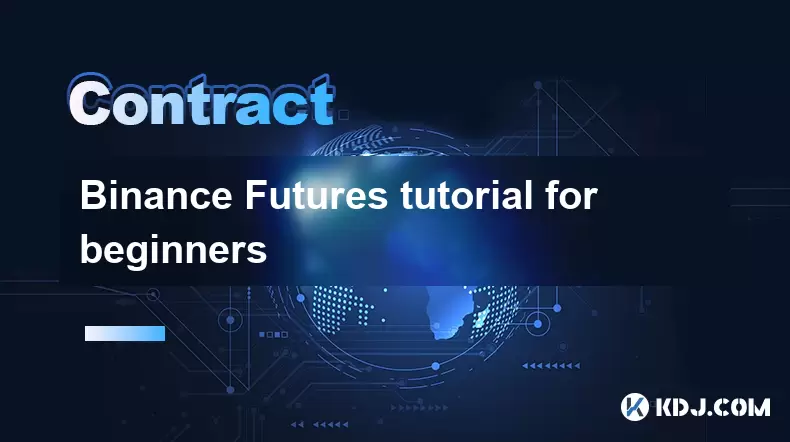-
 Bitcoin
Bitcoin $117700
-0.03% -
 Ethereum
Ethereum $3805
0.49% -
 XRP
XRP $3.098
-1.00% -
 Tether USDt
Tether USDt $1.000
0.03% -
 BNB
BNB $792.8
-1.72% -
 Solana
Solana $177.9
-1.95% -
 USDC
USDC $1.000
0.02% -
 Dogecoin
Dogecoin $0.2202
-1.55% -
 TRON
TRON $0.3278
-2.92% -
 Cardano
Cardano $0.7641
-2.43% -
 Hyperliquid
Hyperliquid $42.21
-2.68% -
 Sui
Sui $3.758
-1.58% -
 Stellar
Stellar $0.4080
-3.21% -
 Chainlink
Chainlink $17.75
-0.33% -
 Bitcoin Cash
Bitcoin Cash $591.8
4.96% -
 Hedera
Hedera $0.2561
-3.09% -
 Avalanche
Avalanche $23.34
-4.24% -
 Litecoin
Litecoin $110.7
1.96% -
 UNUS SED LEO
UNUS SED LEO $8.956
-0.01% -
 Toncoin
Toncoin $3.410
0.79% -
 Ethena USDe
Ethena USDe $1.001
0.03% -
 Shiba Inu
Shiba Inu $0.00001288
-1.82% -
 Uniswap
Uniswap $10.07
-2.06% -
 Polkadot
Polkadot $3.807
-2.27% -
 Monero
Monero $308.2
-2.15% -
 Dai
Dai $1.000
0.03% -
 Bitget Token
Bitget Token $4.521
-0.30% -
 Pepe
Pepe $0.00001134
-1.52% -
 Cronos
Cronos $0.1457
0.65% -
 Aave
Aave $274.9
-2.47%
Binance Futures tutorial for beginners
Binance Futures lets you trade crypto derivatives with leverage, allowing speculation on price moves without owning the asset—ideal for beginners using USDT-margined contracts.
Jul 30, 2025 at 12:01 pm

What is Binance Futures?
Binance Futures is a cryptocurrency derivatives trading platform offered by Binance, one of the world’s largest crypto exchanges. It allows users to trade futures contracts—agreements to buy or sell an asset at a predetermined price at a specified time in the future. Unlike spot trading, where you own the actual crypto, futures let you speculate on price movements using leverage. This means you can control a larger position with a smaller amount of capital. The most common type offered is USDT-Margined Futures, where profits and losses are denominated in USDT, making it easier for beginners to track value changes.
How to Set Up a Binance Futures Account
Before trading, ensure your Binance account is verified. Go to [futures.binance.com](https://futures.binance.com) and click “Start Trading.” You’ll be prompted to accept the terms and activate your futures wallet.
- Navigate to your Binance account dashboard
- Click on “Futures” in the top menu
- Choose “USDT-Margined Futures” (recommended for beginners)
- Accept the risk disclosure agreement
- Your futures wallet will now appear under “Wallet” > “Futures Wallet”
This setup links your spot and futures accounts, allowing seamless transfers of funds like USDT or BUSD for margin trading.Understanding Key Terms: Leverage, Margin, and Liquidation
- Leverage: This amplifies your position size. For example, 10x leverage means a 1% price move equals a 10% gain or loss. Beginners should start with low leverage like 3x or 5x to minimize risk.
- Margin: The collateral you deposit to open a position. Initial margin opens the trade; maintenance margin keeps it open. If your equity drops below maintenance margin, liquidation occurs.
- Liquidation Price: The price at which your position is automatically closed to prevent further losses. Binance shows this in real-time on the order panel. Always check this before placing a trade—it’s a critical safety metric.
Step-by-Step Guide to Placing Your First Futures Trade
Let’s say you want to go long on BTC/USDT with 5x leverage: - Select “BTC/USDT” from the futures market list
- Choose “Cross” or “Isolated” margin mode—Isolated is safer for beginners because losses are capped at the allocated margin
- Enter your position size (e.g., $100)
- Set leverage to 5x using the slider
- Click “Buy Open Long”
- Confirm the order details including estimated liquidation price
- Your position appears under “Current Position” with real-time P&L
You can close the trade manually by clicking “Close” or set a stop-loss/take-profit using the “TP/SL” button.Managing Risk: Stop-Loss, Take-Profit, and Position Size
Risk management is essential in futures trading. Never risk more than 1–2% of your total capital per trade. - Set a stop-loss (SL) to limit losses—e.g., if you enter at $60,000, set SL at $58,500 (2.5% drop)
- Set a take-profit (TP) to lock in gains—e.g., TP at $63,000 (5% gain)
- Calculate position size based on your SL distance: if your SL is $1,500 away and you risk $10, your position should be $10 / $1,500 = 0.0067 BTC
These tools are found in the “TP/SL” section when you have an open position. Always double-check the values before confirming—they directly impact your capital preservation.Common Mistakes Beginners Make (and How to Avoid Them)
- Using too much leverage: High leverage like 50x or 100x can wipe out your account with tiny price moves. Stick to 5x or lower until experienced.
- Ignoring liquidation price: Always monitor how close your current price is to liquidation. A sudden volatility spike can trigger it fast.
- Trading without a plan: Define entry, exit, and risk parameters before placing any trade. Emotional trading leads to losses.
- Not using stop-loss: Even experienced traders use stop-losses. It’s not optional—it’s a necessity in leveraged markets.
Frequently Asked Questions
Q: Can I lose more than my initial deposit in Binance Futures?
No. Binance uses a risk-limit system and automatic liquidation. If your equity hits zero, the position closes, and you won’t owe additional funds—even during extreme market gaps.Q: What’s the difference between Cross and Isolated margin?
In Isolated margin, only the allocated funds are at risk per trade. In Cross margin, all your futures wallet balance acts as collateral for all open positions, increasing risk but offering better flexibility.Q: How do I transfer funds from my Binance spot wallet to futures?
Go to “Wallet” > “Fiat and Spot” > “Transfer.” Select “Spot to Futures,” choose the asset (e.g., USDT), enter amount, and confirm. The transfer is instant and free.Q: Why does my liquidation price change during a trade?
Liquidation price updates in real-time based on your position size, leverage, and funding fees. If you add more margin or reduce position size, it moves further from the current price—making your trade safer.
Disclaimer:info@kdj.com
The information provided is not trading advice. kdj.com does not assume any responsibility for any investments made based on the information provided in this article. Cryptocurrencies are highly volatile and it is highly recommended that you invest with caution after thorough research!
If you believe that the content used on this website infringes your copyright, please contact us immediately (info@kdj.com) and we will delete it promptly.
- Retail, Crypto, Visibility: Decoding the Signals in Today's Market
- 2025-07-31 12:31:08
- Bitcoin, Altcoin Selloff, and the FOMC Decision: A Crypto Market Rollercoaster
- 2025-07-31 12:35:33
- Cold Wallet vs. MetaMask: A Crypto Wallet Revolution?
- 2025-07-31 10:30:57
- Bitcoin Casinos in 2025: Instant Payouts and Welcome Bonuses
- 2025-07-31 10:50:33
- Meme Coins in 2025: Token Burns and the Quest for Moonshots
- 2025-07-31 10:50:33
- Unlocking Value: A Deep Dive into Random Year 1 oz Krugerrand Gold Coins
- 2025-07-31 10:57:21
Related knowledge

Why is my Bitstamp futures position being liquidated?
Jul 23,2025 at 11:08am
Understanding Futures Liquidation on BitstampFutures trading on Bitstamp involves borrowing funds to open leveraged positions, which amplifies both po...

How to report Bitstamp futures for taxes?
Jul 30,2025 at 08:35am
Understanding Bitstamp Futures and Taxable EventsWhen trading Bitstamp futures, it’s essential to recognize that these financial instruments are treat...

Does Bitstamp offer inverse contracts?
Jul 23,2025 at 01:28pm
Understanding Inverse Contracts in Cryptocurrency TradingIn the realm of cryptocurrency derivatives, inverse contracts are a specific type of futures ...

What is the difference between futures and perpetuals on Bitstamp?
Jul 27,2025 at 05:08am
Understanding Futures Contracts on BitstampFutures contracts on Bitstamp are financial derivatives that allow traders to speculate on the future price...

How to find your Bitstamp futures trade history?
Jul 23,2025 at 08:07am
Understanding Bitstamp and Futures Trading AvailabilityAs of the current state of Bitstamp’s service offerings, it is critical to clarify that Bitstam...

Can I use a trailing stop on Bitstamp futures?
Jul 23,2025 at 01:42pm
Understanding Trailing Stops in Cryptocurrency TradingA trailing stop is a dynamic type of stop-loss order that adjusts automatically as the price of ...

Why is my Bitstamp futures position being liquidated?
Jul 23,2025 at 11:08am
Understanding Futures Liquidation on BitstampFutures trading on Bitstamp involves borrowing funds to open leveraged positions, which amplifies both po...

How to report Bitstamp futures for taxes?
Jul 30,2025 at 08:35am
Understanding Bitstamp Futures and Taxable EventsWhen trading Bitstamp futures, it’s essential to recognize that these financial instruments are treat...

Does Bitstamp offer inverse contracts?
Jul 23,2025 at 01:28pm
Understanding Inverse Contracts in Cryptocurrency TradingIn the realm of cryptocurrency derivatives, inverse contracts are a specific type of futures ...

What is the difference between futures and perpetuals on Bitstamp?
Jul 27,2025 at 05:08am
Understanding Futures Contracts on BitstampFutures contracts on Bitstamp are financial derivatives that allow traders to speculate on the future price...

How to find your Bitstamp futures trade history?
Jul 23,2025 at 08:07am
Understanding Bitstamp and Futures Trading AvailabilityAs of the current state of Bitstamp’s service offerings, it is critical to clarify that Bitstam...

Can I use a trailing stop on Bitstamp futures?
Jul 23,2025 at 01:42pm
Understanding Trailing Stops in Cryptocurrency TradingA trailing stop is a dynamic type of stop-loss order that adjusts automatically as the price of ...
See all articles

























































































